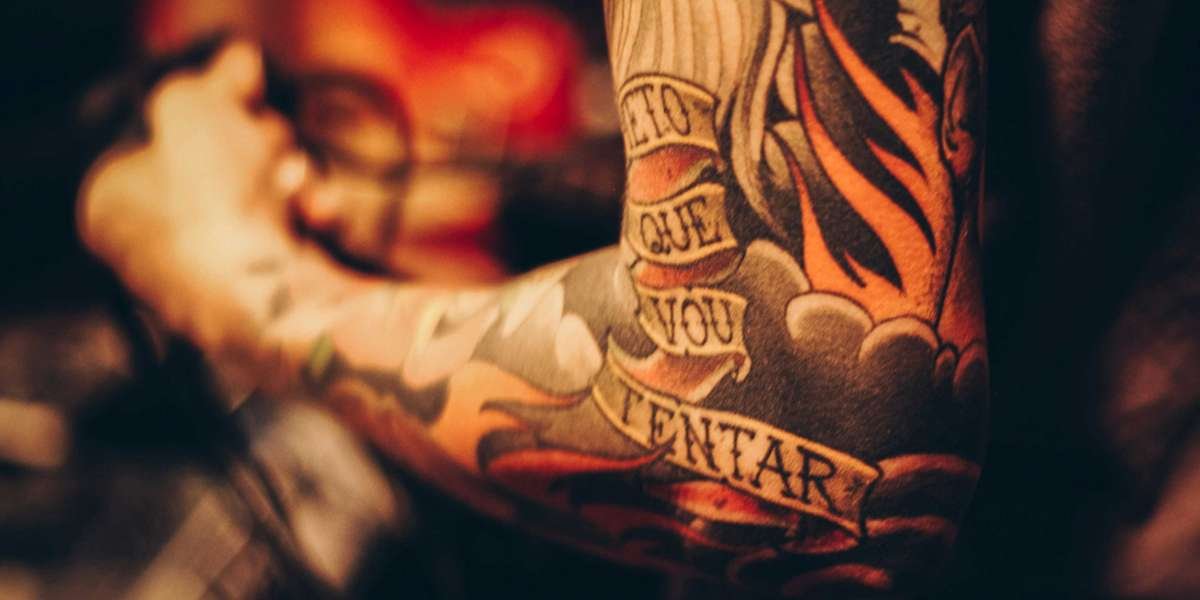Across the world, tattoos hold deep significance, symbolizing everything from spiritual beliefs to markers of status and individuality. Whether you're intrigued by the traditional practices of indigenous tribes or modern, avant-garde tattoo styles, understanding the rich tapestry of tattoo culture offers a deeper appreciation for this enduring art form. In this article, we explore famous and unusual tattoo cultures across different regions and how they’ve shaped contemporary tattooing.
1. Traditional Tattoo Cultures Around the World
Tattooing has ancient roots in various indigenous and cultural practices, many of which continue to influence modern tattooing. Some of the most notable traditional tattoo cultures include:
Polynesian Tattoos
Polynesian tattooing, particularly in Samoa and Hawaii, holds immense cultural and spiritual significance. In Samoa, the traditional tattoo is called Pe’a, a large and intricate design that covers the lower body and legs. The process is deeply ceremonial, often symbolizing a rite of passage into adulthood and demonstrating a person's endurance and commitment to their community. Similarly, in Hawaii, tattoos, or kakau, have long been used to represent genealogy, personal achievements, and protection.
The geometric patterns and motifs seen in Polynesian tattoos continue to inspire tattoo artists worldwide, who blend these ancient symbols with modern techniques to create timeless designs.
Japanese Irezumi
Irezumi, or traditional Japanese tattooing, is known for its detailed, full-body designs that often depict dragons, koi fish, and samurai warriors. This style is steeped in myth and history, with deep-rooted symbolism. Dragons represent strength and wisdom, while koi fish symbolize perseverance and good fortune.
Historically, irezumi was associated with the Japanese Yakuza, but today, it has gained widespread appreciation for its artistry. The meticulous hand-poked technique used in irezumi is also an homage to Japan’s tattooing history, though modern artists now use machines to replicate these stunning pieces.
Indigenous Tattoos in North America
Many Native American tribes have long practiced tattooing as part of their spiritual and cultural traditions. Tattoos often served as markers of social status, personal achievements, and spiritual guidance. For example, Inuit women would tattoo their faces with lines to signify their roles within the community, often reflecting their journeys into adulthood.
Today, Indigenous tattoo practices are seeing a revival, as younger generations embrace their ancestral roots and use tattoos to reclaim their heritage.
2. The Role of Tattoos in Contemporary Society
Tattoos have undergone a transformation over the last century, from being stigmatized as symbols of rebellion or deviance to gaining acceptance as a mainstream form of personal expression. This shift has been driven in part by celebrities, athletes, and influencers who openly flaunt their ink, normalizing the practice across all social classes.
From Subculture to Mainstream
In the 20th century, tattoos were often associated with countercultures such as bikers, punks, and sailors. However, as tattooing became more accessible and diversified, it began to attract a broader audience. The rise of social media platforms like Instagram has played a key role in this shift, allowing artists to showcase their work to a global audience. Tattoo culture has now entered the mainstream, with tattoo studios becoming artistic hubs for creativity and innovation.
Minimalist tattoos, featuring clean lines and small designs, have become a popular choice, especially among young people who prefer subtlety over the bold, intricate designs of previous decades. This minimalist style often incorporates meaningful symbols, text, or geometric shapes, and has grown in popularity due to its versatility and aesthetic appeal.
Tattoos as a Form of Self-Expression
For many individuals, tattoos serve as powerful symbols of identity and self-expression. Each tattoo carries its own story—whether it's a tribute to a loved one, a reflection of personal growth, or a reminder of an important life event. Tattooing allows people to visually display their beliefs, experiences, and passions, using their skin as a canvas.
Custom designs are in high demand, with clients working closely with artists to create unique tattoos that reflect their individual personalities. This move toward personalization highlights the growing acceptance of tattoos as an intimate, personal form of art rather than a mere fashion statement.
3. The Future of Tattoos: Trends and Technologies
As tattoos continue to evolve, new trends and technologies are shaping the future of the art form.
Virtual and Augmented Reality Tattoos
Some tattoo artists and tech enthusiasts are experimenting with augmented reality (AR) tattoos, which use smartphone apps to animate the designs. By scanning the tattoo with a camera, users can see their tattoos come to life with moving images or hidden elements. This fusion of technology and tattooing is still in its early stages but has the potential to revolutionize the tattoo industry, offering more interactive and dynamic ways to experience body art.
Biometric and Bioluminescent Tattoos
In addition to AR tattoos, scientists are exploring the possibilities of biometric tattoos, which can monitor a person’s health. These tattoos change color based on various physiological changes, such as hydration levels or blood sugar, making them not only decorative but also functional. Though this technology is still experimental, it highlights the potential future intersections between tattooing, health, and technology.
Sustainable Tattooing
As the world shifts towards more eco-friendly practices, the tattoo industry is also beginning to adopt sustainable methods. Vegan tattoo ink, biodegradable tattoo needles, and ethically sourced materials are becoming more prevalent. Many tattoo artists are committed to reducing their environmental impact by using cruelty-free and sustainable products, ensuring that clients can enjoy their tattoos without compromising their values.
4. Tattoos and Other Forms of Art
Tattoo culture has increasingly merged with other forms of creative expression. Many tattoo artists draw inspiration from fine art, graphic design, and fashion, blending traditional tattoo styles with modern aesthetics. Some artists even collaborate with brands and designers to create exclusive pieces of tattoo art that are exhibited in galleries or featured in advertising campaigns.
In particular, the overlap between tattoo art and street art has gained traction, with many tattoo artists creating murals or limited-edition prints of their tattoo designs. This cross-pollination of creative industries underscores the versatility and artistic value of tattooing as an evolving art form.
Conclusion
Tattoo culture continues to grow in complexity and significance, weaving together ancient traditions and modern innovations. From its roots in sacred rituals to its mainstream acceptance as a form of personal expression, tattoos have become a powerful way for people to tell their stories through art. As technology and artistic trends evolve, tattoos will likely continue to adapt, offering new ways for individuals to showcase their identities and passions.

